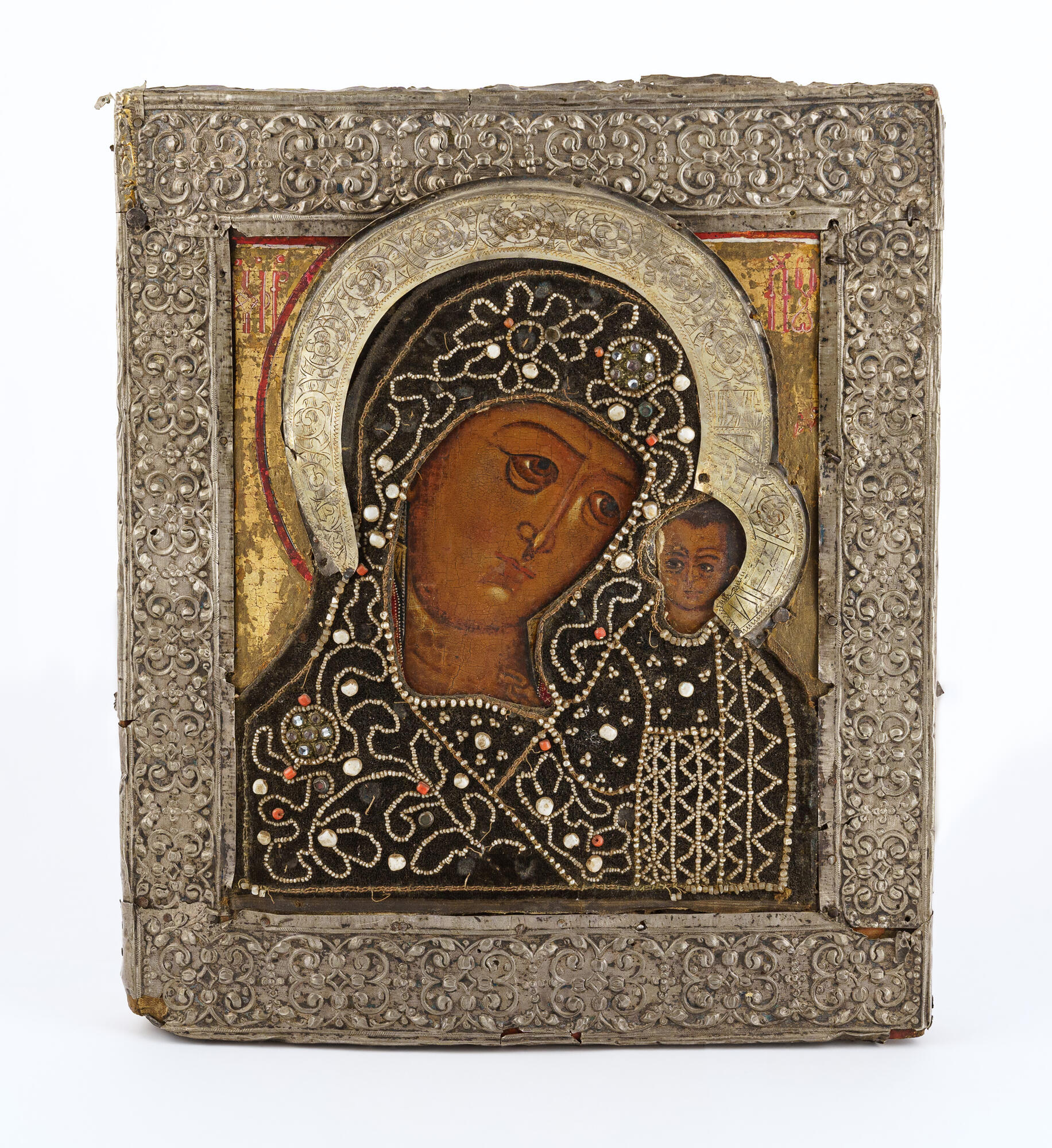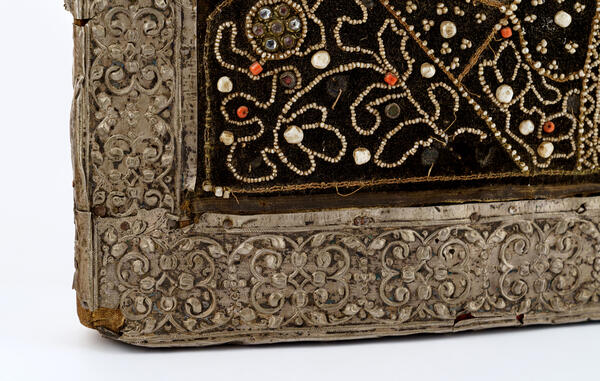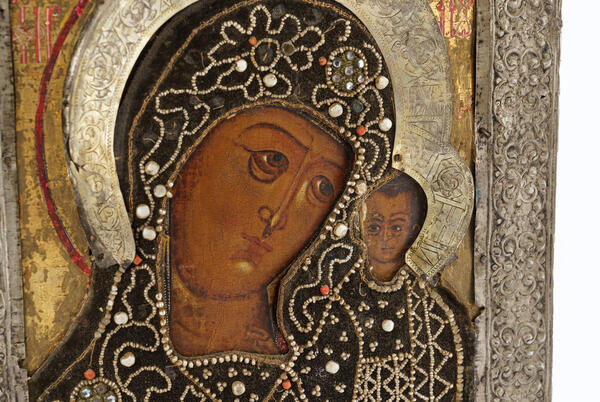One of the most revered images of the Mother of God in Russia is Our Lady of Kazan. The icon belongs to the iconographic type Hodegetria (Our Lady of the Way). Traditionally, the Virgin is depicted facing the viewer, with the Infant Jesus Christ sitting on Her arm.
The original Icon of the Mother of God of Kazan was miraculously revealed in 1579 after a big fire in Kazan. According to legend, the Mother of God appeared in a dream to a girl called Matrona and ordered Her image to be dug up in the ashes of a burned-down house. No one paid attention to the girl’s story. Three times the Blessed Virgin appeared to her with Her command, so then Matrona with her mother began to dig the ground in the place indicated by the Virgin and found the icon untouched by fire.
Soon it became clear that it was a miracle-working icon. According to testimonies, after praying to it, the blind could see again and those who suffered from migraines found relief. At the same time, it was decided to make a copy of the image and send it to the Moscow court of Tsar Ivan the Terrible. The tsar wished to establish a convent on the site of the icon’s discovery. The Kazan image gained national fame and reverence. Several precious rizas (covers) were created for the icon. The covers were changed on certain days of the year. They were decorated with gold, diamonds, rubies, sapphires, and other stones.
The Kazan Icon of the Mother of God was associated with the liberation of Moscow from the Poles who captured the city in 1612, the victory of Russian troops in the Battle of Poltava in 1709, as well as with the Russian triumph in the war with Napoleon in 1812. For several centuries the icon was the main sacred treasure of Kazan, but in 1904 it was stolen. The thieves were caught, however, the criminals allegedly managed to burn it.
The icon presented at the exhibition “The Art of
Mstyora” is a canonical shoulder-length image of the Mother of God, tilting Her
head to the Infant Christ. In the icon, the Christ Child is represented facing
the viewer directly. Only His right hand raised in a blessing gesture is
visible. The other hand of the Infant is hidden under His clothes. Above the
heads of the Mother of God and Jesus Christ are metal crowns with an engraved
pattern of flowers. The robes are lined with black suede and ornamented with
glass beads, seed beads and stones. The icon’s cover is decorated with a
hammered pattern of interlacing stems with small leaves.





